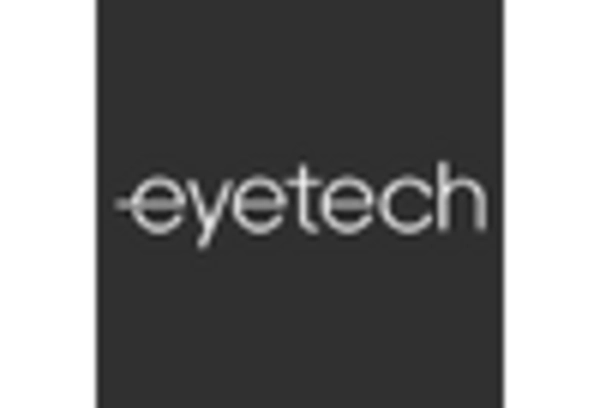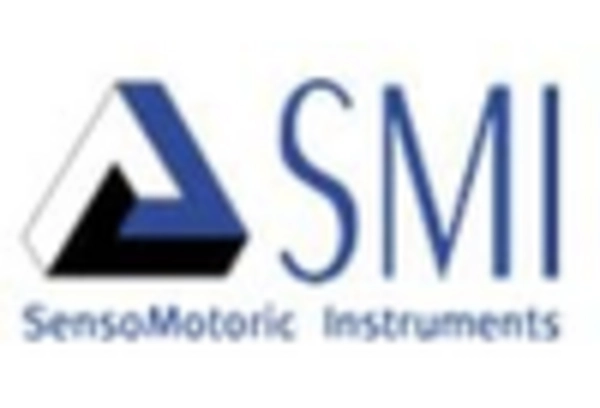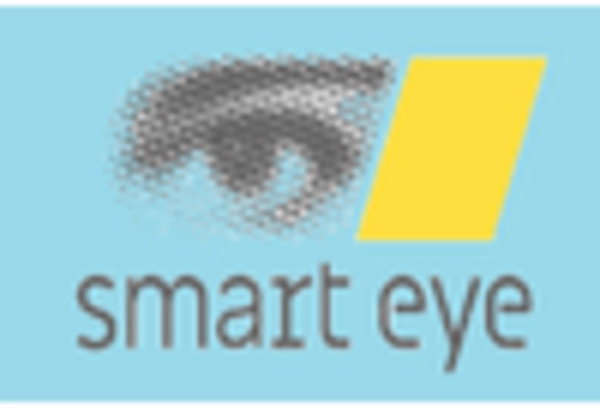Emergence of Wearable Technology
The emergence of wearable technology is significantly impacting the 3D Eye Tracking Software Market Industry. Wearable devices equipped with eye tracking capabilities are becoming increasingly popular in various applications, including health monitoring and gaming. These devices provide users with hands-free interaction and real-time feedback, enhancing the overall user experience. The wearable technology market is projected to reach 60 billion USD by 2026, with eye tracking being a critical feature in many of these devices. This trend indicates a potential for substantial growth in the 3D eye tracking software sector as more companies explore innovative applications for wearable technology.
Increased Adoption in Automotive Sector
The automotive industry is increasingly adopting 3D Eye Tracking Software Market Industry solutions to enhance driver safety and experience. Eye tracking technology is being integrated into advanced driver-assistance systems (ADAS) to monitor driver attention and fatigue levels. This integration not only improves safety but also contributes to the development of autonomous driving technologies. As of 2025, the automotive sector is projected to invest over 10 billion USD in driver monitoring systems, with eye tracking being a pivotal component. This trend indicates a growing recognition of the importance of eye tracking in ensuring safer driving experiences.
Rising Demand for Enhanced User Interaction
The 3D Eye Tracking Software Market Industry is experiencing a notable increase in demand for enhanced user interaction across various sectors. As businesses strive to create more engaging and immersive experiences, the integration of 3D eye tracking technology has become essential. This technology allows for real-time analysis of user behavior, enabling companies to tailor their offerings to meet consumer preferences. In 2023, the market for eye tracking software was valued at approximately 500 million USD, with projections indicating a compound annual growth rate of around 25% over the next five years. This growth is driven by the need for improved customer engagement and the desire to leverage data analytics for better decision-making.
Advancements in Virtual and Augmented Reality
The 3D Eye Tracking Software Market Industry is significantly influenced by advancements in virtual and augmented reality technologies. As these technologies evolve, the demand for sophisticated eye tracking solutions that can seamlessly integrate with VR and AR systems is on the rise. Eye tracking enhances the realism of virtual environments by allowing users to interact naturally with digital content. In 2024, the market for VR and AR applications is expected to surpass 200 billion USD, with eye tracking playing a crucial role in this expansion. This trend suggests that companies investing in 3D eye tracking software are likely to gain a competitive edge in the immersive technology landscape.
Growing Interest in Market Research Future and Usability Testing
The 3D Eye Tracking Software Market Industry is witnessing a surge in interest from Market Research Future and usability testing sectors. Companies are increasingly utilizing eye tracking technology to gain insights into consumer behavior and preferences. By analyzing where users look and how long they focus on specific elements, businesses can optimize product designs and marketing strategies. In 2023, the market for usability testing tools was valued at around 300 million USD, with eye tracking emerging as a key component in enhancing research methodologies. This trend suggests that the demand for 3D eye tracking software will continue to grow as organizations seek to improve their understanding of user interactions.















Leave a Comment